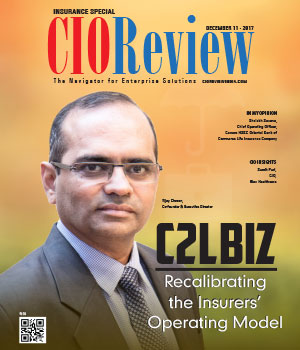
Transforming the Insurance Sector with Low Code
By Virender Jeet, Senior Vice President -Sales & Marketing /Products,Newgen Software | Thursday, 27 May 2021, 04:34 IST

As insurance organizations increasingly prioritize accelerating their digital initiatives, they must deliver innovative products and personalized offerings. Insurers must imbue their operations with enough technical agility and scalability to develop and deploy applications rapidly.
The Road to Digital: What’s Stopping Insurance Companies
Insurance providers face many challenges, especially in the digital age, including dwindling customer loyalty, growing operational expenses, and rising customer acquisition costs. Additionally, they face roadblocks on a technological front, related to:
· Development speed: When development and deployment speeds are slow, the time-to-market for products and updates is extended, resulting in high turnaround times and a poor customer experience
· Technological relevance: Existing systems and legacy solutions can create a lack of flexibility, while outdated languages, databases, and architectures can hinder the speed and efficacy of digitization
· IT dependency: An over-dependence on the IT team, often due to the ever-widening gap in IT capacity versus demand, can result in bottlenecks, slow processes and updates, and increased infrastructural costs
· IT governance: In many cases employees are forced to use shadow IT—or non-sanctioned software and systems—due to the unavailability of the right applications, leading to inefficient operations and risk of non-compliance
The solution? A low code automation platform that can help insurance companies reduce time to market, deliver a consistent omnichannel customer experience, and enable intelligent automation.
Low Code as a Key Enabler for Insurance Industry
Insurance companies no longer require siloed, hard-coded legacy systems. Instead, they must be able to orchestrate and configure various point applications, all from a single, integrated interface. A low code platform provides the tools to do just that—bridging the IT gap and empowering business users to drive automation by rapidly building and deploying purpose-built applications.
By leveraging low code, insurers can extend their tech ecosystem—building easy-to-use, self-service portals and dashboards for their stakeholders. Furthermore, they can de-couple their legacy systems and freely integrate with third-party systems and new-age technologies to stay agile and future-ready.
5 Ways Low Code Can Transform the Insurance Sector
With a low code platform, insurance organizations can:
1. Speed up time-to-market: Using low code, insurers can quickly introduce new products and services into their repertoire and gain a competitive advantage. They can automate mission-critical business processes and ensure operational speed and agility
2. Empower business users: Insurance organizations can empower their employees with a modeling-driven environment to design and develop end-to-end applications and processes. By transforming business users into citizen developers, insurance providers can reduce dependence on IT and enable easy process orchestration, configuration, and processing of change requests. Additionally, underwriters can gain more control and configure rules related to underwriting, premium calculation, and discounting
3. Enable holistic customer journey: A low code digital platform can eliminate operational disconnects by bridging process, content, and communication silos, thereby enabling a seamless customer journey—from need analysis, quotation management and generation, new business development, and underwriting to policy servicing and claims management
4. Provide technological relevance and efficient IT governance: A low code framework provides a unified platform for building multiple processes, thereby reducing dependence on various vendors. Furthermore, centrally building multiple configurable and integrated business functions creates uniformity and data consistency, further enhancing efficiency
5. Ensure compliance: A low code platform offers complete visibility of end-to-end insurance operations and presents a unified view of data across teams and departments—including agents, backend operations, legal providers, and more. Furthermore, it provides enough agility to make changes according to the evolving regulatory ecosystem
Preparing for the Future with Low Code
Accelerating digital is no longer an option. And by leveraging a low code platform, insurers can amplify their digital initiatives, gaining speed and agility across their processes. Furthermore, a platform-based approach allows insurance providers to deliver a superior customer experience and remain compliant by enabling users to configure rules per their specific requirements.
For modern insurance providers, rapid adoption of new-age technologies is key to staying relevant and competitive in a dynamic marketplace. And low code is the way forward.
CIO Viewpoint
Insurance Tech Trends: Moving from Brick to...
By Dheepak Rajoo, Chief Information Officer, Royal Sundaram General Insurance
Easing the access to insurance with...
By Ayan De, Chief Technology Officer, Exide Life Insurance
Does an Organization's Digital Journey Warrant...
By Mudit Agarwal, Global IT Head, Uflex
CXO Insights
Significance of Customer-centric Digital...
By Janifha Evangeline
How tech will shape insurance operations in...
By By Ayan De, Chief Technology Officer, Exide Life Insurance
Transforming the Insurance Sector with Low Code




.jpg)
.jpg)





